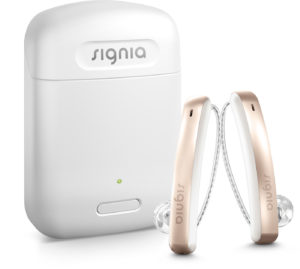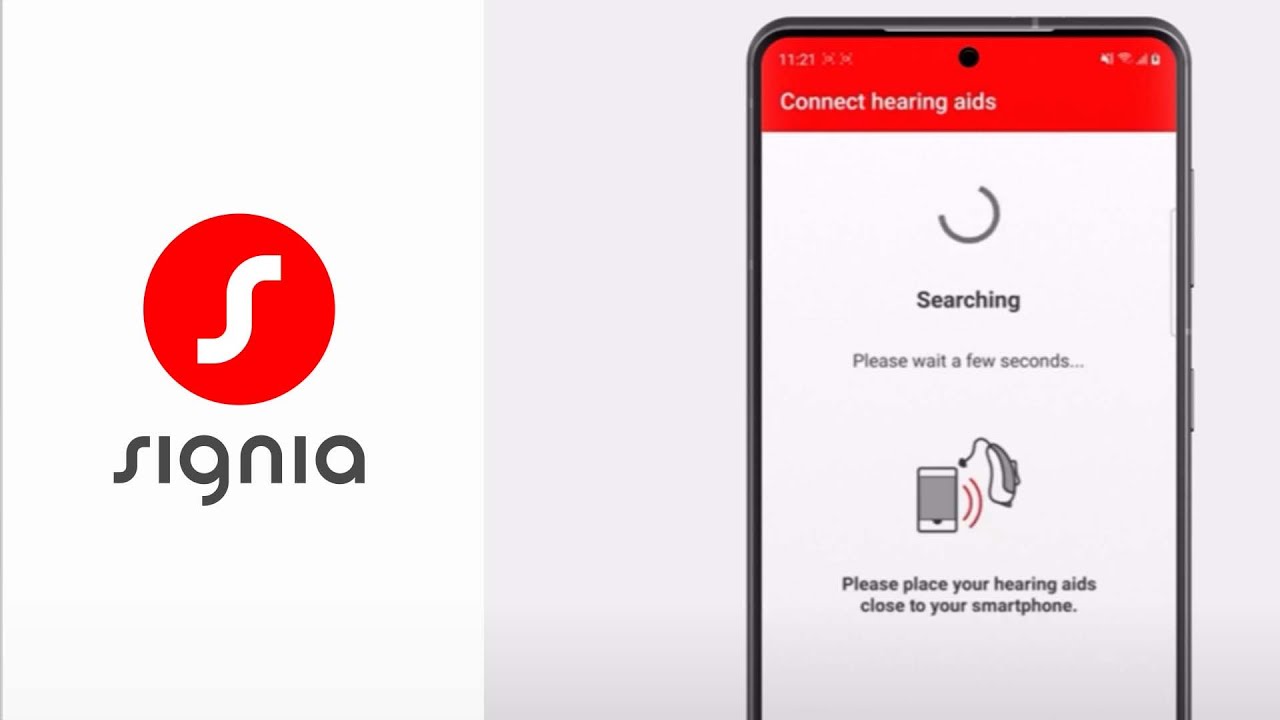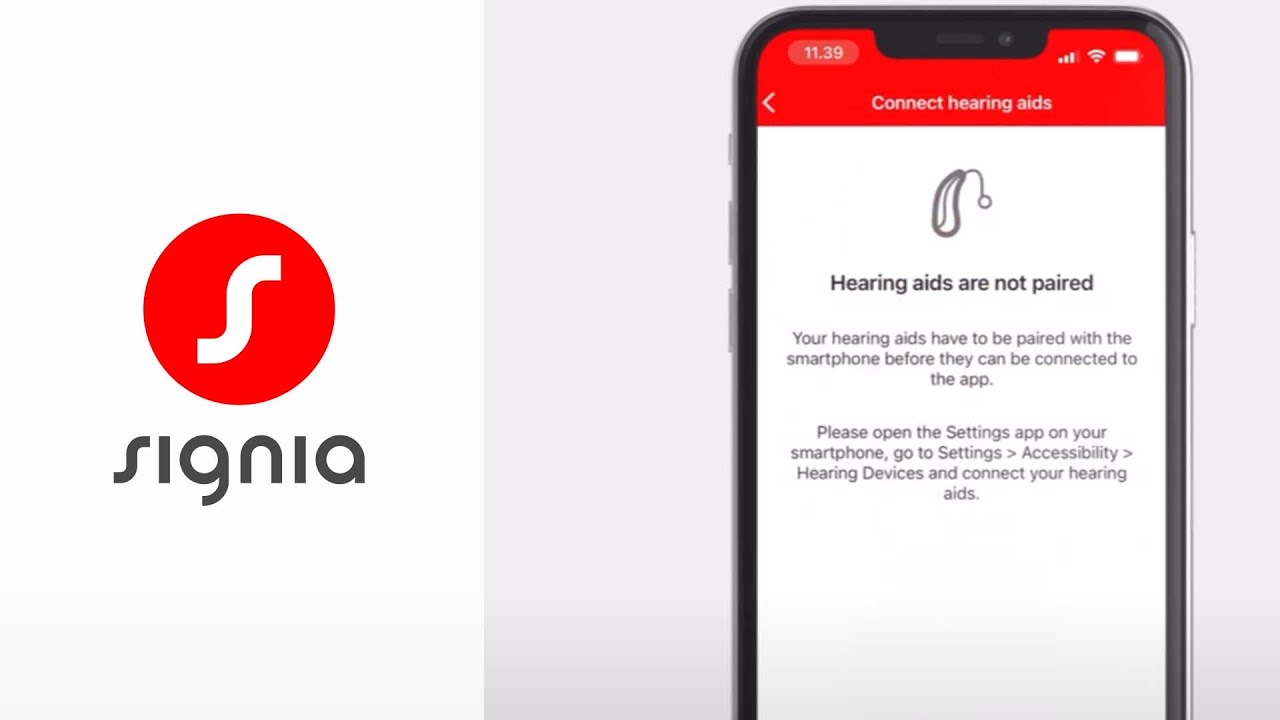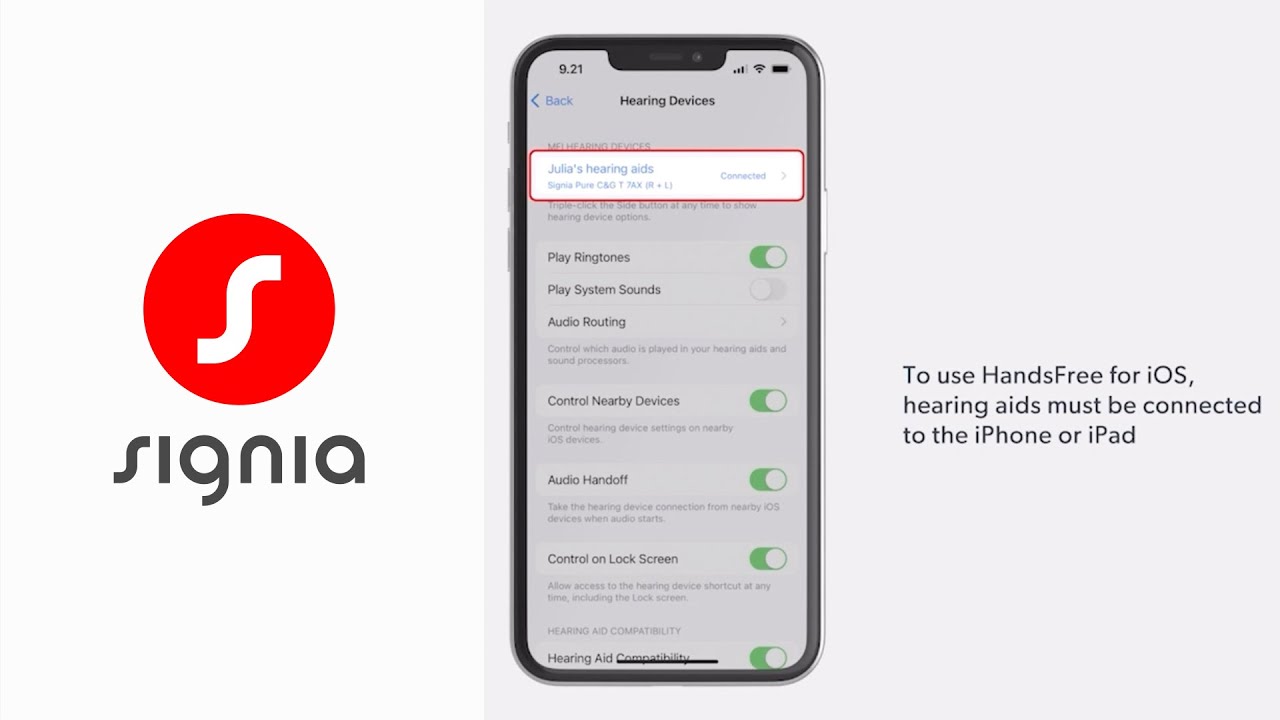Signia Hearing Aids
Austin Hearing Aid Center is an authorized provider of Signia hearing aids in Austin, TX.
Signia hearing aids offer a game-changing experience for hearing aid wearers, including acoustic-motion sensors, enhanced speech clarity, echo shield and other features that allow wearers to stay fully involved in life with better and clearer hearing.
Need help connecting your hearing instruments to your phone or other device? CLICK HERE and scroll through the support videos to learn more.

Signia Hearing Products
Signia also carries the world’s first Face Mask Mode setting, allowing users to better understand speech even through masks.
Learn more how Signia’s latest innovations can help you be part of the conversation once again, eliminating the fear of missing out on any sound or word being said.
Signia Pure Charge&Go AX
The all-new Pure Charge&Go AX is the smallest rechargeable RIC offering from Signia. This device is a crowd favorite, both adored by experienced and first-time hearing aid users. If you are looking for a sleek and sophisticated-looking hearing device that is fully featured, Pure Charge&Go AX is on the top of the list.
Signia Silk X
If you’re looking for a more discreet, nearly-invisible hearing experience, the Signia Silk is the world’s smallest hearing aid that sits discreetly inside the ear. The sleeves are made with a highly adaptable soft-silicone material that ensures comfort and a secure-fit that’s not previously available with custom-built housings. The sleeves of the Signia Silk are available in 4 different sizes to guarantee the best fit for a wide range of ear shapes.
Signia CROS Pure Charge&Go AX
This is the newest CROS hearing aid that delivers an augmented listening experience for individuals with untreatable hearing loss in one ear. Featuring the revolutionary Augmented Xperience platform, CROS Pure Charge&Go AX can process key sounds separately from surrounding sounds. This results in outstanding speech clarity in an immersive soundscape.
Signia Xperience
Be empowered with the ability to experience optimum hearing levels wherever you go with Signia Xperience. With its revolutionary YourSound technology, delight in its superior sound processing powered by unique acoustic-motion sensors. The device can measure more aspects than ever before, which means that Signia Xperience can smartly adapt to your movements (no matter how big or small) and deliver a snag-free listening experience.
Signia Active Pro
This latest iconic innovation from Signia hearing aids delivers revolutionary earbud-like aesthetics that has been getting the approval of a new generation of hearing aid wearers. With it’s one-of-a-kind form factor, the Signia Active breaks the stigma of hearing aids being clunky, large, and inconvenient. Signia Active comes with a sleek, small and a modern earbud design.
In terms of convenience and comfort, wearers can easily use the Signia Active hearing aids whenever they need a hearing boost or choose to wear it all day for non-stop, high-quality hearing performance.
The Signia Active is a perfect combination of design and performance – it’s the full package! This rechargeable, instant-fit device offers exceptional hearing in noise, Bluetooth streaming, personalized sound, and tinnitus therapy. It’s got everything you need packed in one small but powerful device.
Styletto X
Signia hearing aids were engineered with powerful performance and convenience combined. With the Signia Styletto X, wearers can live without compromise thanks to this highly sophisticated hearing aid. The uniquely stylish and award-winning design is powered with full connectivity to all Bluetooth devices.
Connect easily to a smartphone, TV, and other smart devices with just one press of a button.The Signia Styletto X is portable, with a Qi wireless charging case that can hold up to 3 days of extra charges, perfect for people on the go.
Tinnitus may be a dark area of hearing problems, but Signia has found a way to incorporate the technology of their hearing aids to address tinnitus-related issues. The Signia Styletto X offers tinnitus therapy options for wearers with hearing loss and tinnitus.
Signia Pure Charge&Go X
Experience all the advantages of Signia Xperience with Li-ion rechargeability and fully-featured Bluetooth connectivity with Pure Charge&Go X.
Get more out of life with 20% more battery capacity and enjoy full flexibility and convenience as you stream calls, music, and TV in high-quality sound.
Signia Pure 312 X
Small, discreet, powerful – meet Signia Pure 312 X. Carrying all the benefits of the Signia Xperience platform, Pure 312 X is highly attractive thanks to its elegant and sleek design.
Even though it’s small and discreet, Pure 312 X proudly offers fully-featured Bluetooth connectivity so you can stream calls, music, TV and more. An integrated T-Coil is also available.
Signia Nx
Experience a whole new level of hearing with Signia Nx’s outstanding soundscape processing. With the sophisticated technology of Signia Nx, you can enjoy more performance with smaller devices. Even the smallest-sized hearing aid in the Signia Nx line is powered with Ultra HD e2e and Bluetooth. Signia Nx is available across all performance levels from 7 to 1. Choose among the following Signia Nx hearing aids – Pure 10 Nx, Pure 13 Nx, Motion 13 Nx, Insio Nx ITC/ITE, Insio Nx IIC/CIC.
Signia Hearing Aids | Austin, Texas
To know more about Signia hearing aids, our team at Austin Hearing Aid Center will be happy to help.
Contact us today for a consultation!
Need help connecting your hearing instruments to your phone or other device?
Book Appointment
Get Directions
Our office is conveniently located off Ben White and Menchaca Road. We take our time with each person, therefore, it is necessary to schedule your appointment in advance.
-
4403 Menchaca Road, Suite E
Austin, TX 78745 - (512) 444-8684
- (512) 444-8697
Testimonials
What People Say?
Testimonials
What People Say?



FAQ
Frequently Asked Questions
I provide a comfortable place for people to come have their hearing tested and discuss their hearing concerns. I offer a free, no obligation hearing aid evaluation. If it turns out that you are a candidate for hearing aids, there is a 45-day trial period that includes follow up care to assure proper adjustment.







 For 15 years my audiologist Mr Randolph and his assistant have gave me the best service I could ever expect and a 5 Star rating is not enough for them and they deserve the amount of stars in the universe which are unmeasurable just as is my gratitude towards both of them.
For 15 years my audiologist Mr Randolph and his assistant have gave me the best service I could ever expect and a 5 Star rating is not enough for them and they deserve the amount of stars in the universe which are unmeasurable just as is my gratitude towards both of them.